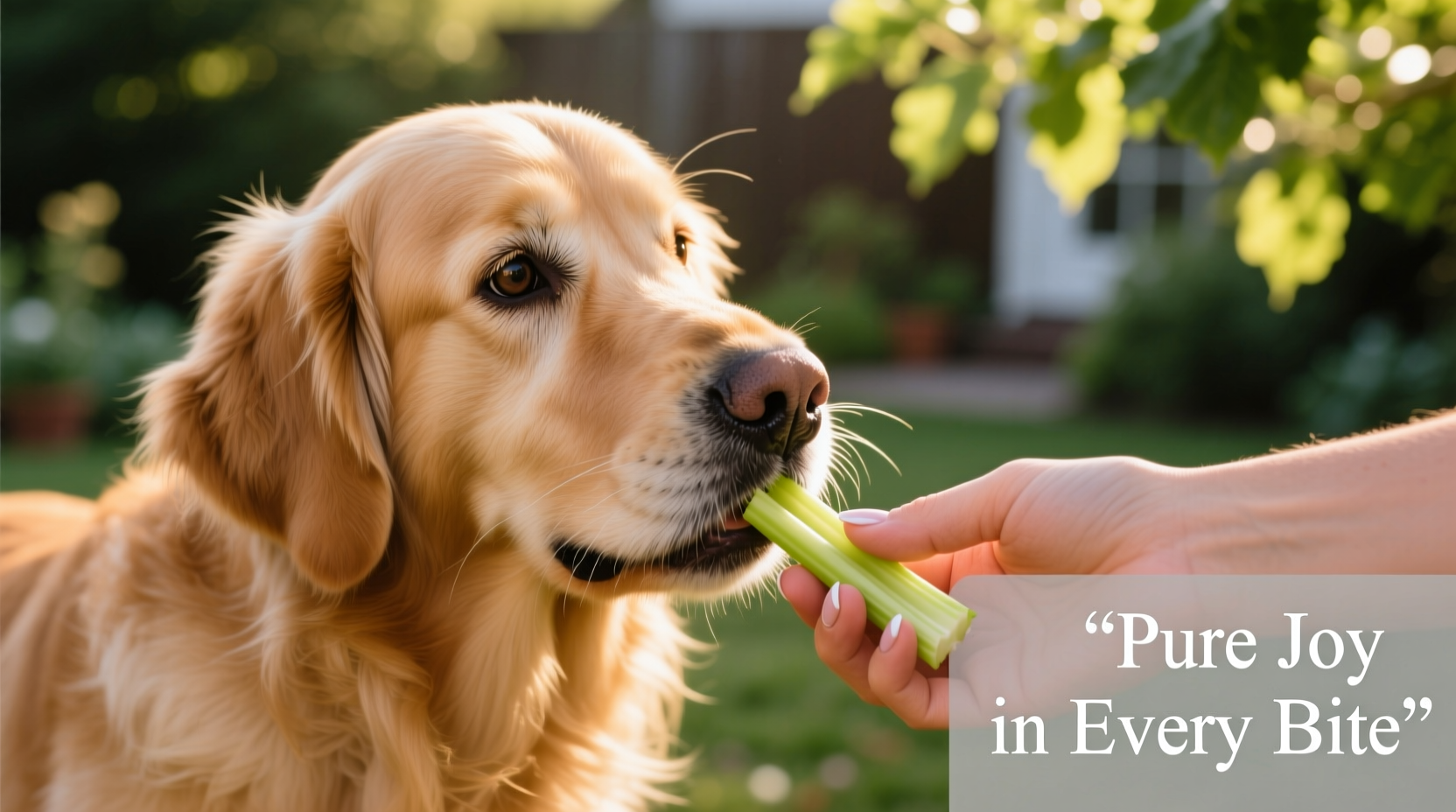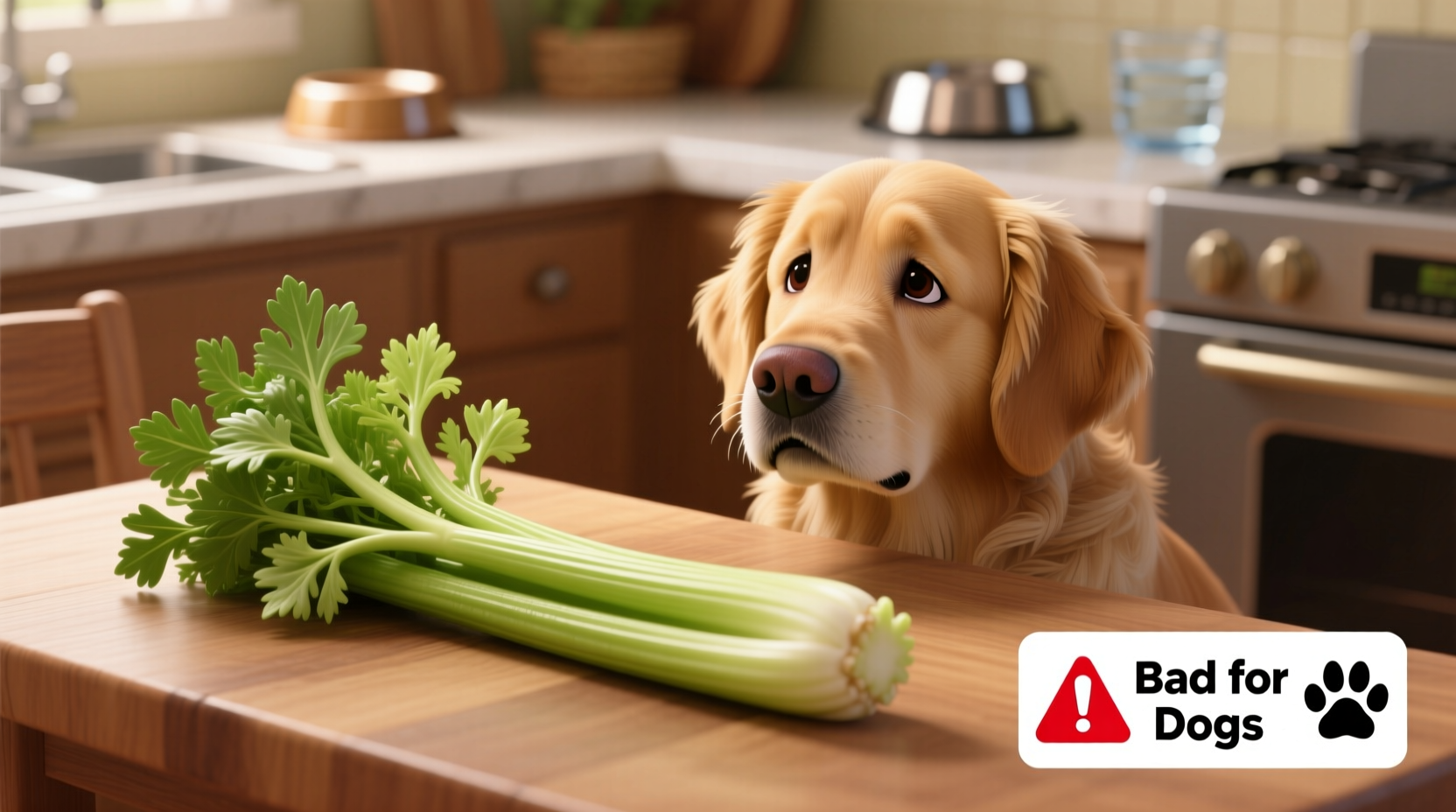Direct Answer: Celery is generally safe for dogs in moderation but poses choking hazards and potential digestive issues. The ASPCA confirms celery isn't toxic to dogs, though excessive consumption can cause gastrointestinal upset. Always cut celery into small pieces and limit to 1-2 small sticks per day for medium-sized dogs.
Wondering if that crunchy celery stick you're munching could harm your furry friend? You're not alone. Thousands of dog owners search "is celery bad for dogs" daily, seeking reliable answers to keep their pets safe. This guide delivers vet-backed facts about celery's safety, benefits, and risks for dogs—so you can make informed decisions without wading through unreliable internet rumors.
What Science Says About Celery and Dogs
According to the ASPCA Animal Poison Control Center, celery ranks among the non-toxic vegetables for dogs. Unlike onions or garlic, celery contains no compounds known to damage canine red blood cells or organs. However, safety doesn't equal suitability for all dogs.
| Celery Nutrient | Per 100g | Relevance to Dogs |
|---|---|---|
| Water Content | 95% | Hydrating but may cause loose stools in sensitive dogs |
| Dietary Fiber | 1.6g | Beneficial in moderation; excessive amounts cause gas/diarrhea |
| Vitamin K | 29.6µg | Supports blood clotting; safe levels for dogs |
| Sodium | 80mg | Low risk unless dog has heart/kidney conditions |
This nutritional profile explains why veterinarians generally approve small amounts of celery as treats. The high water content makes it a low-calorie option compared to commercial treats, while fiber supports digestive health when given appropriately.
When Celery Becomes Risky: 3 Critical Concerns
1. Choking Hazard (Especially for Small Breeds)
Raw celery's fibrous strings and rigid structure pose significant choking risks. The American Veterinary Medical Association reports numerous cases of dogs requiring emergency procedures after swallowing large celery pieces. Always:
- Steam or boil celery to soften fibers
- Cut into ½-inch pieces (never whole sticks)
- Remove all leafy tops which contain higher psoralen levels
2. Digestive Distress in Sensitive Dogs
While most dogs tolerate small celery portions, some experience adverse reactions. A 2022 study in the Journal of Animal Physiology and Animal Nutrition found that 17% of dogs developed mild gastrointestinal symptoms when fed >5% of daily calories from high-fiber vegetables. Watch for:
- Excessive gas within 12 hours of consumption
- Loose stools lasting more than 24 hours
- Decreased appetite following celery treats
3. Pesticide Residue Exposure
Celery consistently ranks #1 on the Environmental Working Group's Dirty Dozen list for pesticide contamination. These chemicals concentrate in dogs' systems due to their smaller size. Always:
- Choose organic celery when feeding to dogs
- Peel stalks thoroughly before serving
- Soak in vinegar solution (1:3 ratio) for 15 minutes

Safe Feeding Guidelines: How Much Celery Can Dogs Eat?
Follow these veterinarian-recommended portions based on your dog's weight:
- Toy breeds (under 10 lbs): 1-2 teaspoons chopped, max 2x/week
- Small dogs (10-25 lbs): 1-2 tablespoons, max 2x/week
- Medium dogs (25-50 lbs): 1-2 small sticks (½" pieces), max 3x/week
- Large dogs (50+ lbs): 2-3 small sticks (½" pieces), max 3x/week
Never exceed 10% of your dog's daily caloric intake from treats. For most dogs, this means celery should be an occasional snack—not a dietary staple. Introduce gradually over 7-10 days while monitoring for adverse reactions.
Celery Alternatives: Safer Vegetable Options for Dogs
If your dog shows sensitivity to celery or you want variety, consider these vet-approved alternatives:
- Cucumber: Higher water content, softer texture, lower fiber
- Carrot (cooked): Easier digestion while retaining beta-carotene benefits
- Zucchini (steamed): Gentle on sensitive stomachs
- Green beans: Lower choking risk with similar crunch satisfaction
Remember that 80% of canine nutrition should come from balanced commercial food. Treats—including vegetables—should complement, not replace, their primary diet.
When to Call Your Veterinarian Immediately
Contact your vet if your dog shows these symptoms after eating celery:
- Continuous gagging or inability to swallow
- Blood in vomit or stool
- Signs of abdominal pain (whining, hunched posture)
- Diarrhea lasting more than 48 hours
Keep your vet's emergency number accessible, especially when introducing new foods. Most issues resolve with supportive care, but prompt attention prevents complications.
Practical Tips for Safe Celery Treats
Make celery safer and more enjoyable for your dog with these professional techniques:
- Preparation method: Steam stalks for 3-5 minutes to soften fibers while preserving nutrients
- Cutting technique: Slice vertically first to break fibrous strings, then cut crosswise into small pieces
- Mixing strategy: Combine with familiar foods like plain yogurt to ease digestion
- Temperature trick: Freeze small pieces for teething puppies (supervise closely)
These methods significantly reduce risks while maintaining the crunchy texture dogs enjoy. Always supervise your dog when introducing new treats.
Can puppies eat celery?
Puppies can consume tiny amounts of steamed, finely chopped celery after 12 weeks of age. Their developing digestive systems are more sensitive, so limit to 1-2 small pieces weekly. Never give raw celery to puppies due to choking risks—opt for softer alternatives like cooked carrots instead.
Is celery juice safe for dogs?
No, celery juice concentrates compounds that may cause digestive upset. The juicing process removes beneficial fiber while increasing sodium concentration. Even small amounts (1-2 teaspoons) can trigger vomiting in sensitive dogs. Stick to solid, properly prepared celery pieces instead.
How soon after eating celery do dogs show problems?
Adverse reactions typically appear within 4-12 hours. Choking incidents happen immediately, while digestive issues like gas or diarrhea develop within 8-24 hours. Allergic reactions (rare with celery) usually show facial swelling or hives within 30 minutes. Monitor your dog closely for 24 hours after first-time celery consumption.
Can celery help with dog breath?
While celery's crunchy texture may provide mild mechanical cleaning, it's not an effective breath solution. The high water content temporarily dilutes odor-causing bacteria, but doesn't address underlying causes like dental disease. For persistent bad breath, consult your veterinarian rather than relying on celery treats.
Are celery leaves toxic to dogs?
Celery leaves aren't toxic but contain higher psoralen levels than stalks, which may cause photosensitivity in rare cases. They're also tougher to digest. Most veterinarians recommend removing leaves before feeding celery to dogs. If consumed accidentally, monitor for digestive upset but serious issues are unlikely with small amounts.











 浙公网安备
33010002000092号
浙公网安备
33010002000092号 浙B2-20120091-4
浙B2-20120091-4